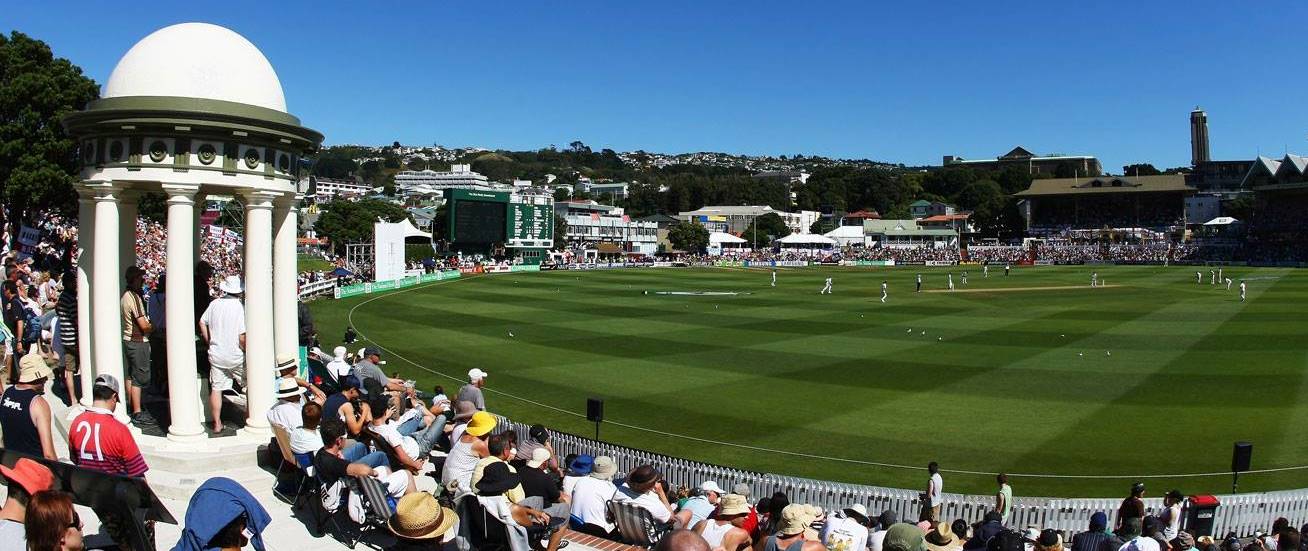We need to talk about William
0In 2017, to coincide with the British and Irish Lions rugby tour, the New Zealand Cricket Museum ran tours of Wellington’s Basin Reserve. The Basin is an ideal stadium for tours, as it has so much history, and so many stories to tell.
At the time, the earthquake-prone Museum Stand offered an insight into the Basin of yesteryear, taking in the Cricket Museum – located in the former dining room – and the original changing rooms, used when the first Test was played at the ground in 1930.
The Vance Stand gave visitors the chance to look at the bucket of cigarette butts left behind by Brendon McCullum, the changing rooms used by current players, and the increasingly elevated views offered by the Long Room, the players’ balcony, and the media rooms.
The so-called Groundsman’s Cottage is the oldest building at the ground and was in the final stages of being refurbished at the time. The misnomer here is that the original Groundsman’s Cottage was long gone and the old structure that had inherited its name was actually overflow changing rooms built in the 1890s.
Looming over the ground, the scoreboard was a highlight for many. Its rotating boards and, at times, haphazard letters have made it another icon within the ground. Inside, generations of aspiring young cricketers, doing their tour of duty as casual staff at the Basin, had left some choice words in etched graffiti inside.
Finally, and most relevant to the world around us today, there was the William Wakefield Memorial. The Memorial is the oldest built structure at the Basin, having been installed in 1882. It has moved outside, and back into, the ground but it has been a constant in the pictorial history of the Basin. As a structure, it provides a reference point to interpret much of that history.
It is also a monument to a man best not memorialised.
The younger brother of Edward Gibbon Wakefield, the founder of the New Zealand Company, William Wakefield was closely tied to many of the actions and activities of his brother and extended family. That included the abduction of 15-year-old Ellen Turner, an act that saw the brothers each serve three years in prison back in England.
In New Zealand, Edward’s Company drove the European invasion of New Zealand, while William was on the first ship to establish the settlement that would come to be Wellington. The brothers were set on controlling as much land as possible for their business and colonisation interests. This led William to ignore the Māori rights to land in the Wairau Valley, near Nelson. He sent another brother, Arthur, to the area to continue surveying the land which led to escalating tensions. Eventually, driven by 47 armed European settlers arriving at the site, tensions boiled over. The resulting fighting saw four Māori and 22 settlers killed. The Wairau Affray, as it came to be known, was the first major post-Treaty fighting between Māori and Pākēha. A history book will tell you what happened next better than any of the, almost exclusively Pākēha-focused, memorials to the New Zealand Wars will.
William Wakefield died in 1848 – incidentally, also the first year that a New Zealand newspaper reference to his role in abducting Ellen Turner can be found. 34 years later a structure with his name on it was erected at the Basin Reserve. Now, more than 150 years after he died, the actions of Wakefield are being viewed more critically than ever. His legacy is bracketed in history books and on websites with the abduction and Wairau stories. At the Basin Reserve, while a plaque offers some context, his name is always mentioned before the word “Memorial”. An honour unbefitting his actions.
So, what do we do with William?
For most people, the attachment to the Basin Reserve comes from its status as a sports’ ground. While detractors of the central city greenspace often run it down as ‘just’ a cricket ground, the Basin has hosted all manner of sporting and social events throughout its history. A history that covers much of the city’s lifespan. For all that history, from sport to settlement, there are important stories that are missing.
The Basin Reserve sits within the rohe of Ngāti Toa. Before European settlement, the wetland basin was filled with raupo and flax, important resources for local Māori. William Wakefield had planned to turn the wetland into a literal basin, linking it to the harbour via a widened Waitangi Stream to create a safe harbour to dock ships. The 1855 Wairarapa earthquake changed those plans, and it eventually became the sportsground we know today.
Over the past decade, the New Zealand Transport Agency have been planning, consulting, lawyering-up, and starting again on plans to redevelop the roads that surround the Basin. In a response to one of these proposals from NZTA, Ngāti Toa expressed excitement at the opportunity to tell the story of their interaction with the Basin, and the importance of its link to the harbour. With the original Waitangi Stream redirected through culverts along Adelaide Road, under the Basin, and down Kent Terrace, their story continues to, literally, run through the ground.
While my attachment to the Basin Reserve is passionate and based on having spent close to every day there for more than five years, it does not qualify me to speak on behalf of those who continue to feel the weight of the actions of William Wakefield, his family, and those he empowered. That weight, which has had little to none of its pressure lifted through remedial action over the years, goes beyond the attachment so many feel to the Basin.
You don’t have to rewrite history to change the narrative.
Memorials and statues anchor history in a single moment. They are the literal freezing of time. That is not how history works. Regardless of how objective you may wish to perceive it, the narrative of history is subjected to shifting perspectives which provide additional context.
Today’s context tells us, clearly, that the moments in history which, at one point, deemed William Wakefield worthy of memoralising do not stand up. That context didn’t exist at the time the memorial was commissioned – local newspapers didn’t appear to mention Wakefield’s child abduction history until the year he died and that was only because one man questioned his character, plenty spoke up for it. The narrative around him was consistently that he was a man to be celebrated.
Today, the plaque next to the Wakefield Memorial says, paraphrasing, William Wakefield wasn’t the best dude. But it’s only a small portion of the population who read that. Fewer still, perhaps, who truly understand it. For everyone else, they only see and hear the words “Wakefield Memorial” and the implication that Wakefield was a man worth memorialising.
However you wish to frame it, the structure as it is currently presented continues that celebration of Wakefield, a man who would not be memorialised today.
So, how can the space be reclaimed, the narrative moved from achievements to abhorrent actions, the focus shifted from the oppressor to the oppressed?
You don’t have to destroy something to break it down.
The first step is a conversation, but it shouldn’t be the binary options that it appears Wellington City Council have already voted on: it’s not keep it or remove it. It’s perhaps not the absence of the built structure that will put William Wakefield in his proper place. The presence of something else – an addition, a deconstruction, another perspective – which provides context and the story that has always been missing, could be what is required to break down his legacy and change the narrative.
Let’s be clear, though, that narrative doesn’t change with another cricket story. Wakefield Memorial making way for McCullum Statue is not resolution. The conversation for the future starts with Ngāti Toa and, perhaps, with their proposal for NZTA,
“The development of interpretive signage, sculptures, carvings or other art forms to give expression to the early history and cultural importance of the area is an exciting possibility.”
Follow Jamie on Twitter

